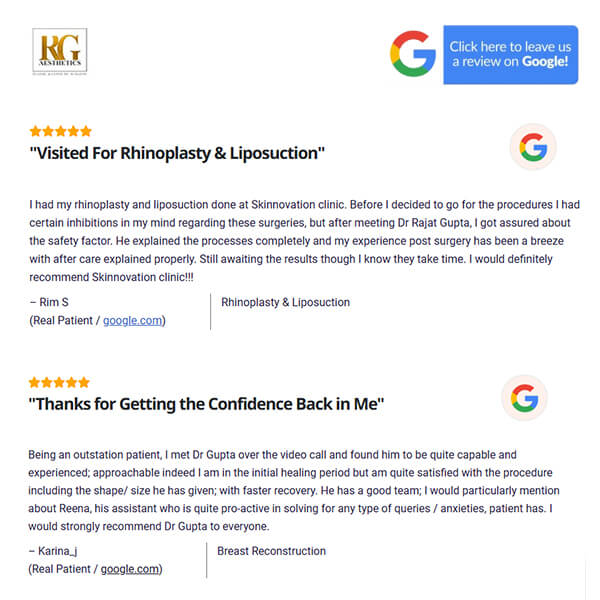How to Get Gynecomastia Surgery Covered by Insurance?
For many men, gynecomastia, the enlargement of male breast tissue, is more than a physical concern. It can chip away at self-esteem, affect daily life, and lead to persistent discomfort. While gynecomastia surgery in Delhi offers a permanent solution, one common worry holds many back: Will my insurance company cover the cost?
The answer is not always straightforward. Insurance coverage for this procedure often depends on whether it is considered “medically necessary” rather than purely cosmetic. Over the years, I’ve helped countless patients navigate this maze successfully, and in this blog, I’ll share how you can do the same, step by step.
Gynecomastia Surgery and Its Insurance Challenges
Gynecomastia surgery, also known as male breast reduction, removes excess glandular tissue and fat deposits to create a flatter, more masculine chest contour. Despite its physical and emotional benefits, many insurance companies hesitate to classify it as a reconstructive procedure.
Why? Because insurers often assume the surgery is purely aesthetic unless there’s clear medical evidence of discomfort, functional impairment, or related health issues. If you’re looking for coverage, your goal is to show that the condition impacts your well-being, not just your appearance.
Have questions or want to get started? We are ready to help you with a smile!
Role of a Plastic Surgery Specialist in Delhi
Consulting a qualified plastic surgery specialist in Delhi can make a world of difference. An experienced surgeon doesn’t just perform the procedure; they help you build a compelling medical case for insurance approval.
Here’s what this process typically includes:
- A thorough medical evaluation documenting pain, tenderness, or restricted physical activity caused by gynecomastia.
- Imaging tests like ultrasound or mammography to differentiate glandular tissue from fat accumulation.
- Medical records of previous treatments or medications tried without success.
- Photographic evidence of the condition for your insurance file.
Having a surgeon who understands both the surgical and administrative sides of this journey significantly improves your chances of getting partial or full insurance coverage.
What Insurance Companies Look for Before Approving Surgery?
While every insurer has its own policy terms, most follow certain key criteria when deciding whether to cover gynecomastia surgery:
- Persistent Symptoms: Pain, swelling, or repeated skin infections under the breast fold.
- Physical Limitation: Difficulty running, exercising, or performing certain activities due to the enlarged tissue.
- Non-Surgical Efforts: Lack of improvement despite medical management, hormonal treatment, or discontinuation of causative drugs.
- Age Factor: The condition persists for at least two years beyond puberty.
- Diagnostic Proof: Test results confirming glandular enlargement, not just excess fat.
Meeting these benchmarks helps your case stand out and makes it harder for insurers to classify the procedure as elective.
The Step-by-Step Path to Insurance Approval
Over time, I’ve seen patients increase their approval success rate by following this structured approach:
Step 1: Review Your Insurance Policy Thoroughly
Look for clauses covering reconstructive or medically necessary procedures. Some policies explicitly exclude male breast reduction, but others leave room for exceptions if strong evidence is presented.
Step 2: Choose the Right Surgeon Early On
Work with a plastic surgery specialist in Delhi who has experience with insurance paperwork. Their expertise can help ensure proper documentation from day one.
Step 3: Gather Comprehensive Medical Records
This includes test results, doctor’s notes, photographs, and a documented history of pain, infections, or limitations caused by the condition.
Step 4: Get Pre-Authorisation
Your surgeon’s office submits a request to the insurance provider before the surgery date. This step prevents unexpected claim denials post-surgery.
Step 5: Use Correct Medical Codes
Accurate coding (CPT and ICD codes) increases approval chances. A professional clinic knows how to handle this crucial detail.
Step 6: Be Prepared to Appeal
Even if your initial claim is denied, don’t give up. Filing an appeal with more evidence often overturns the decision.
Real-Life Example of a Successful Claim
One of my patients, a 26-year-old man, came in with severe glandular enlargement that caused chronic pain during workouts. He had already tried weight loss and hormonal therapy with no improvement. With proper tests, photographic documentation, and a detailed medical letter, we submitted a claim to his insurer.
Initially, it was denied as “cosmetic.” We filed an appeal, adding evidence of physical limitations and mental health impact. Within 45 days, the insurance company approved partial coverage for hospital charges and anaesthesia fees.
This example shows why persistence, paired with the right medical support, can make all the difference.
What Costs Insurance Typically Covers (and What It Doesn’t)?
Even when approved, insurance usually covers only medically necessary aspects of gynecomastia surgery. Commonly covered expenses include:
- Hospital facility and operating room charges
- Anaesthesia fees
- Pathology tests (for removed glandular tissue)
However, refinements that enhance aesthetic appearance, like high-definition contouring or liposculpting, are often considered elective and remain out-of-pocket expenses. Knowing this helps you plan financially for any non-covered costs.

Mistakes Patients Often Make While Seeking Coverage
Many insurance claims fail due to avoidable errors. Watch out for these pitfalls:
- Consulting a general surgeon unfamiliar with insurance documentation for male breast reduction.
- Submitting incomplete medical records or unclear photographs.
- Assuming verbal confirmation from the insurer guarantees payment.
- Failing to follow up after pre-authorisation or denial.
By avoiding these mistakes and working with an experienced surgeon, you significantly improve your odds of approval.
When to Consider Financing Options?
If all appeals fail or your insurance policy excludes gynecomastia surgery, don’t lose hope. Many reputable clinics offer flexible payment plans or medical loans, allowing you to undergo treatment immediately and pay in instalments. While insurance coverage is ideal, financing ensures you don’t delay a procedure that can positively impact your health and confidence.
Take Control of Your Treatment Journey
Gynecomastia can affect every aspect of a man’s life, from his confidence to his physical comfort. Insurance approval may not always come easily, but with preparation, persistence, and expert guidance, it is absolutely possible to get coverage for male breast reduction when medical necessity is clear.
The right plastic surgery specialist in Delhi will not only deliver safe, natural-looking results but also help you navigate the insurance process step by step, ensuring you don’t face it alone.
Consult Dr. Rajat Gupta – Your Trusted Partner in Gynecomastia Care
If you’re struggling with gynecomastia and wondering about insurance coverage, reach out to Dr. Rajat Gupta, a renowned board-certified cosmetic surgeon in Delhi. Known for his expertise in male breast reduction, advanced surgical techniques, and patient-first approach, Dr. Gupta provides not just excellent results but also guidance on insurance approvals and financial planning. Book a consultation today and take the first step toward reclaiming your comfort, confidence, and quality of life.
Dr. Rajat Gupta
MBBS, MS, DNB(Gen. Surg.),
DNB (Plastic Surgery)
Dr. Rajat Gupta is a board certified plastic surgeon in India with 15 years of experience to back his expertise in the domain of aesthetic surgeries.
Having completed his training from Maulana Azad Medical College and equipped with a thorough understanding of aesthetic needs of people, Dr. Gupta strives to offer the best remedies and cosmetic procedures outfitted with the latest technology to the aspirants in India and across the globe. To book an appointment, call: +91-9251711711 or email: contact@drrajatgupta.com













